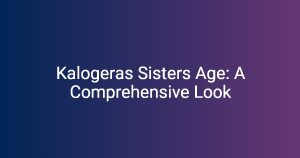Throughout literature and media, the kida character represents a unique archetype that captures the imagination of audiences around the globe. These characters, often depicted with a blend of curiosity, bravery, and cultural depth, resonate deeply in storytelling due to their ability to transcend boundaries and embody universal themes of adventure and resilience. Prominent works featuring kida characters range from ancient mythology to modern animated films, showcasing the character’s evolution and significance across various contexts.
Origin and Evolution of Kida Characters
Historical Context
The origins of the kida character can be traced through the rich tapestry of mythology and folklore. In cultures around the world, kida characters often emerge as representations of strength and independence. For instance, Pacific Island mythology features strong female figures who lead their communities, while Asian legends depict young heroes who embark on quests to save their people. The historical context of these kida characters often shapes their traits and narratives, highlighting cultural values and societal struggles.
Evolution Through Literature
Kida characters have been prevalent in literature for centuries, evolving from the pages of classic works to contemporary novels. In classic literature, characters like Mulan and Joan of Arc exhibit qualities of courage and leadership, serving as early examples of the kida archetype. As literature transformed, so too did these characters, adapting to modern sensibilities while retaining their core attributes of bravery and independence. In modern tales, kida characters often reflect a diverse range of backgrounds and experiences, aligning with today’s broader cultural narratives.
Characteristics of Kida Characters
Common Traits
The kida character is often defined by specific traits. Common physical features include distinctive cultural attire or expressive attributes that set them apart visually. On a personality level, traits such as courage, independence, and charisma are frequently highlighted. However, these characters also possess vulnerabilities, which add depth to their narratives—such as moments of self-doubt or struggles with identity, enriching the overall storyline.
Role in Narrative Structures
Kida characters frequently play crucial roles in narrative structures, particularly in the hero’s journey. They often serve as mentors or guides, helping others navigate challenges. Additionally, the themes of survival and resilience are central to their stories, as they face adversity head-on. These roles not only propel the plot but also facilitate character development and thematic exploration, engaging audiences with their relatable struggles and triumphs.
Kida Characters in Popular Media
Animation and Film
A prime example of a kida character in animation is Kida from Disney’s “Atlantis: The Lost Empire.” Kida embodies the spirit of adventure, showcasing immense bravery and loyalty to her people. Her character resonates strongly due to her unique blend of vulnerability and strength, making her a significant figure in Disney’s pantheon of heroines. Other notable animated characters, such as Moana and Princess Jasmine, also reflect kida characteristics, bringing diversity and depth to their narratives.
Kida in Literature
Famous kida characters abound in literature, with icons like Katniss Everdeen from “The Hunger Games” and Hermione Granger from “Harry Potter” prominently featured. Their journeys of self-discovery and empowerment have a lasting impact on the overall messages of their respective stories, illustrating the strength and depth inherent in kida characters. The portrayal of these figures challenges stereotypes and encourages readers to embrace their individuality.
Kida in Video Games
In the realm of video games, kida-like characters also emerge, such as Aloy from “Horizon Zero Dawn” and Lara Croft from “Tomb Raider.” These characters not only excel in gameplay but also carry significant narrative weight, exploring themes of survival and identity. Their roles remind players of the importance of resilience and courage, further solidifying the cultural impact of the kida character in contemporary media.
Cultural Significance of Kida Characters
Representation and Diversity
The portrayal of kida characters showcases cultural diversity, allowing various narratives and experiences to flourish. These characters break down stereotypes, representing different backgrounds and cultures while contributing to a richer storytelling landscape. The importance of *representation* cannot be overstated, as it fosters understanding and empathy among audiences, connecting people across different social and cultural contexts.
Impact on Audience Perception
Kida characters significantly influence societal views on bravery and adventure. These figures often serve as role models, particularly for younger audiences, who may look to them for inspiration. Their journeys encourage audiences to embrace challenges, pursue goals, and cultivate resilience in the face of adversity. The impact of these characters resonates deeply, shaping perceptions of heroism and strength in contemporary society.
Critique and Controversies
Stereotyping and Misrepresentation
While the kida character often represents positive qualities, there can also be instances of stereotyping or misrepresentation. In some narratives, kida traits may reinforce harmful stereotypes, detracting from the character’s original intent. This critique highlights the importance of careful storytelling, ensuring that character portrayals are nuanced and considerate of cultural sensitivities.
Evolving Perspectives
Contemporary creators are increasingly redefining the kida character to reflect modern values and sensibilities. The balance between honoring tradition and innovating character traits is crucial in developing culturally relevant stories. As society evolves, so too must the narratives surrounding kida characters, allowing for greater understanding and representation in literature and media.
Conclusion
The significance of the kida character in storytelling is profound, embodying themes of adventure, resilience, and cultural diversity. As audiences continue to crave authentic and relatable narratives, the portrayal of kida characters will likely evolve, adapting to contemporary values while staying rooted in their cultural origins. Embracing this evolution is crucial for fostering inclusive storytelling that resonates across generations.
| Character | Origin | Medium | Key Traits | Impact |
|---|---|---|---|---|
| Kida | Atlantis Myth | Animation | Bravery, Independence | Representation of adventure and leadership |
| Katniss Everdeen | Fiction | Literature | Courage, Resourcefulness | Symbol of resistance and survival |
| Aloy | Fiction | Video Game | Determination, Intelligence | Role model for empowerment in gaming |
FAQs
1. What defines a kida character?
A kida character is often defined by traits such as bravery, independence, and cultural significance, marking them as powerful figures within their narratives.
2. How do kida characters influence storytelling?
Kida characters often embody themes of courage and resilience, driving the plot forward and resonating with audiences through relatable struggles.
3. Are there any negative stereotypes associated with kida characters?
Yes, some kida characters may reinforce harmful stereotypes, which is why careful storytelling is necessary to promote nuanced portrayals.
4. Can you provide examples of kida characters in different media?
Examples include Kida from “Atlantis”, Katniss Everdeen from “The Hunger Games”, and Aloy from “Horizon Zero Dawn”.
5. How do kida characters contribute to cultural representation?
Kida characters showcase diverse cultural backgrounds, broadening narratives and promoting empathy among audiences.
6. Why is evolving the kida character important?
Evolving the kida character allows for contemporary relevance, reflecting modern values while honoring cultural origins for inclusive storytelling.
7. What themes are commonly explored with kida characters?
Common themes include adventure, identity, survival, and cultural heritage, enriching the narrative complexity of their stories.
8. What role do kida characters play in children’s media?
Kida characters often serve as role models for resilience and bravery, influencing younger audiences to embrace their individuality and face challenges.
9. How can creators redefine kida characters for today’s audience?
Creators can redefine kida characters by emphasizing their complexities, showcasing diverse backgrounds, and building narratives that resonate with contemporary issues.
10. What is the future of the kida character in storytelling?
The future of the kida character is likely to see greater depth, diversity, and representation, as audiences increasingly demand authentic and meaningful narratives.




